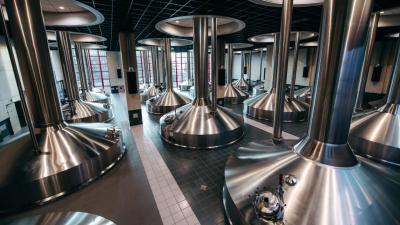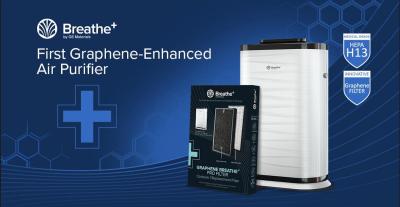The Graphene-Info newsletter ( October 3, 2023 )
posted on
Oct 03, 2023 09:54AM

Hydrothermal Graphite Deposit Ammenable for Commercial Graphene Applications

Cannot read this? View it online here
First Graphene (FGR) has announced it has signed a binding Memorandum of Understanding (MOU) with Abu Dhabi-headquartered integrated services provider EMDAD Group (EMDAD).
The agreement brings the parties together to collaboratively develop and provide a proposal to fund, design, build and commission a small scale, hydrodynamic cavitation reactor using First Graphene’s Kainos Technology. The proposal will ultimately lead to the commissioning of a reactor that will convert petroleum feedstock from oil producers to battery grade graphite, graphene and hydrogen.
Concretene has announced three successful UK government funding bids, two through Innovate UK, totaling £1.18 million (around USD$1,430,000), and one through EPSRC and the Henry Royce Institute for Advanced Materials for £79,000 (about USD$95,000).
The product – a graphene-enhanced admixture for concrete that reduces embodied carbon – is being developed for commercial roll-out by Nationwide Engineering Research & Development and The University of Manchester. The grant awards relate to Concretene’s core research program, from raw material supply through to construction applications.
Versarien has said it is making progress in line with its strategy as it cuts its cost base. The engineering materials company said it has reduced its cost base "significantly", with its loss before interest, tax, depreciation, amortization and exceptional items at a lower run rate than in the first half of the year. As a result, it said it has seen a reduction in cash burn.
Versarien said despite its reduced cost base, it is making progress in its strategy to license its technology, brands and manufacturing expertise, divest its non-core activities and Korean assets and strengthen its scientific teams. Versarien said it would continue to preserve intellectual property within the group whilst reducing operating costs, as it seeks to become a “manufacturing light operation”.
A team of researchers at Penn State has reported the design and fabrication of a long-term stable and highly sensitive flexible electrochemical sensor based on nanocomposite-modified porous graphene by facile laser treatment for detecting biomarkers such as glucose in sweat.
The laser-reduced and patterned stable conductive nanocomposite on the porous graphene electrode provides the resulting glucose sensor with an excellent sensitivity of 1317.69 µA mm−1 cm−2 and an ultra-low limit of detection of 0.079 µm. The sensor can also detect pH and exhibit extraordinary stability to maintain more than 91% sensitivity over 21 days in ambient conditions. Taken together with a temperature sensor based on the same material system, the dual glucose and pH sensor integrated with a flexible microfluidic sweat sampling network further results in accurate continuous on-body glucose detection calibrated by the simultaneously measured pH and temperature.
U.K.-based Evove, which develops graphene-enhanced membrane and filtering solutions, has announced it has completed a pilot demonstrating the use of its filter technology at a large AB InBev brewery in Johannesburg, South Africa.

It was explained that making beer is a process that requires a lot of water: Just sterilizing the equipment in a brewery can mean using thousands of gallons of water every week. That’s especially problematic in a place like drought-prone Johannesburg, where a water shortages and leaky infrastructure mean that water can be in short supply. Normally, the hot, caustic water used to clean tanks and water lines at a brewery can’t be reused, and ends up in the sewer system. It’s filled with grain residues, sugars, and yeasts that can’t easily be filtered out. “With conventional filters, it just clogs up the filters right away,” says Andrew Walker, Evove’s chief marketing officer.
G6 Materials Corporation announced its financial results for FY2023 (which ended on May 31, 2023). For the year, revenue was $1.5 million, up from $1.3 million in 2022. This was offset by increased R&D, general and administrative expenses.

Total loss in the year was $2.8 million, an improved from last year ($4.9 million loss, but that year included $2.7 million investment write-down).
A research team from the University of Illinois Urbana-Champaign and the University of California has reported that the friction on a graphene surface can be dynamically tuned using external electric fields.
The team studied the friction at a single asperity nanoscale contact between the graphene surface of graphene FETs and an AFM tip in a dry nitrogen atmosphere, while the doping level of graphene was modulated in situ by changing the potential applied to the device’s back gate. In contrast to conducting or insulating contacts, graphene in contact with semiconducting tips exhibits an enhanced and tunable friction sensitive to the charge density in graphene.
Chinese electronics company Midea has unveiled an anti-corrosion solution to improve air conditioner performance and reliability in coastal and tropical climates. The solution, featuring proprietary tech called Hyper Grapfins and sheet metal coatings, is integrated into two Midea HVAC systems, BreezelessE and PenroseAir. This technology provides comprehensive protection against salty, humid air, enhancing the durability and lifespan of both indoor and outdoor units.
Air conditioning in coastal regions can be challenging due to the corrosive effects of salt air on the critical components, leading to costly maintenance and replacements for restaurateurs and hotel owners. To address the problem, Midea developed the patented Prime Guard Hyper Grapfin which is coated with graphene to increase the durability, performance, and energy efficiency of HVAC systems.